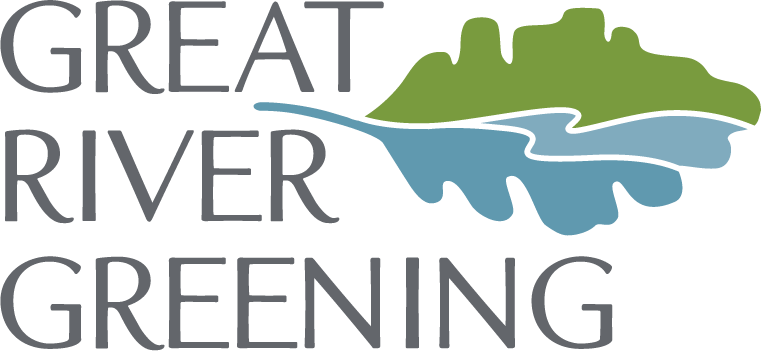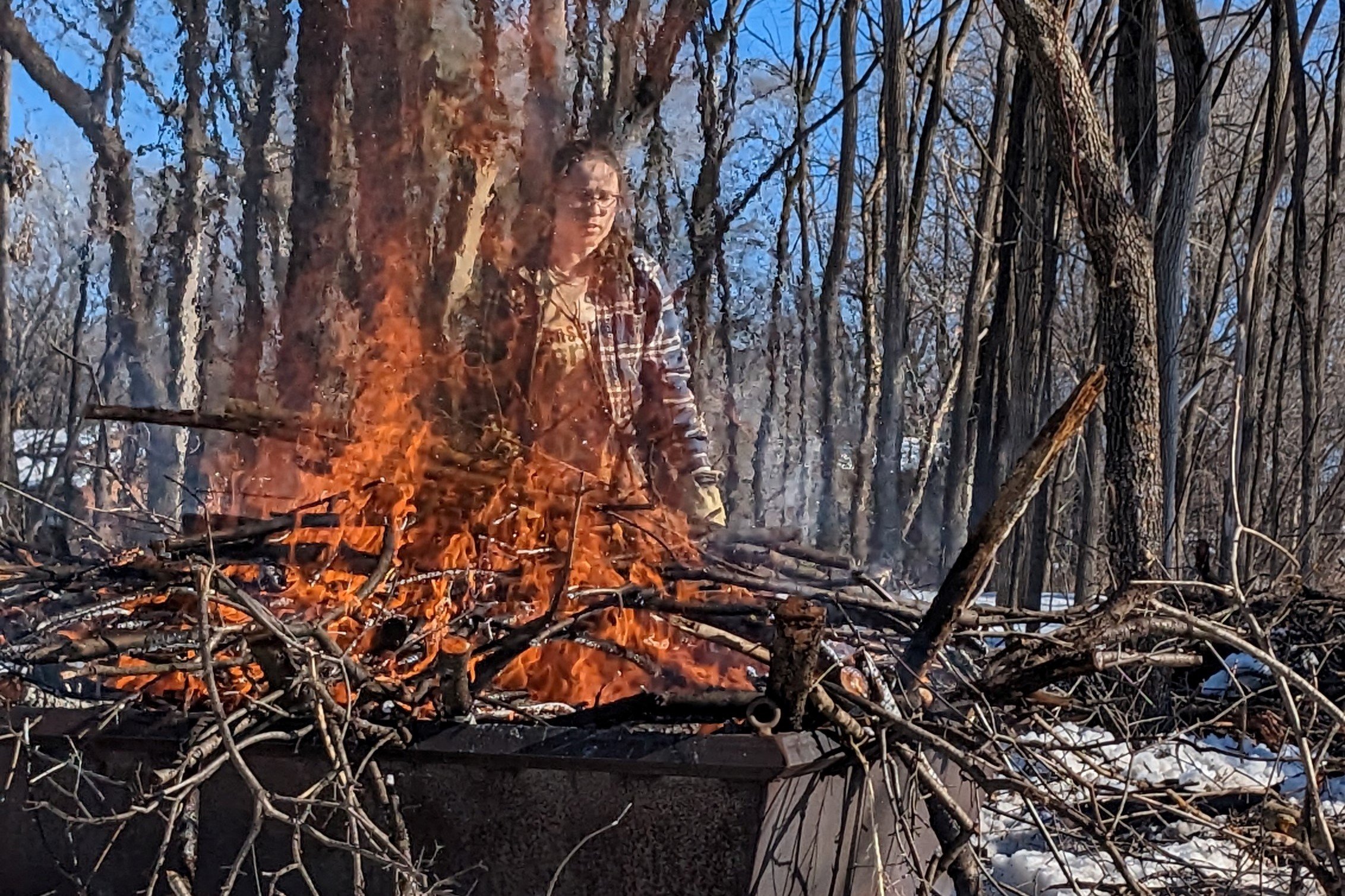Biochar: How this “Supercharged Charcoal” is Helping Great River Greening Achieve our Vision for 2030
When restoring landscapes, often the first step is removing invasive species. Which means after removal, you’ll find large quantities of waste product—pulled buckthorn, for example. Disposing of this waste properly is an important step in the process of creating healthy ecosystems. And the common practice of burning waste releases greenhouse gases, creates air pollution, and damages the soil where burning takes place.
What if there was a way to restore degraded land, mitigate climate change, improve soil and water quality, AND make better use of the waste left behind after invasive species removal?
This is essentially the promise of biochar, a type of charcoal produced by heating organic material in a low-oxygen environment. Sometimes described as “supercharged charcoal,” biochar is a traditional farming practice that has received increasing attention in recent years for its use in land restoration and carbon sequestration.
As we work to achieve our Vision for 2030, Great River Greening is leaning into the practices that we know have the greatest potential to impact our shared climate future in Minnesota, and that includes biochar. Rather than open pile burns, Great River Greening is moving toward burning the waste produced through our restoration work in biochar kilns. The result? 50-80% of the greenhouse gases that would have been emitted during open pile burns is stored, and the biproduct—biochar–goes back into the soil, improving soil health.
Recently, the Great River Greening team has been working with partners to demonstrate how a biochar kiln works. Last month, Greening Solutions Manager Davy Schmitz and his crew demonstrated the use of two different types of biochar kilns at our project site in Fort Snelling. Biochar work in February also included burns with Dakota County at Lake Byllesby Regional Park near Cannon Falls and Marthaler Park in West St. Paul. Later this fall, Great River Greening will be working with a number of partners, including cities and natural resource managers, to plan how this great technique can be used on more projects this winter.
What can you do to help us promote and expand the use of biochar as a powerful tool in mitigating the effects of climate change in Minnesota? Partner with us. Support Great River Greening. Volunteer at an upcoming land restoration event.
For more information on biochar, visit the International Biochar Initiative’s website.
Biochar Photo Gallery
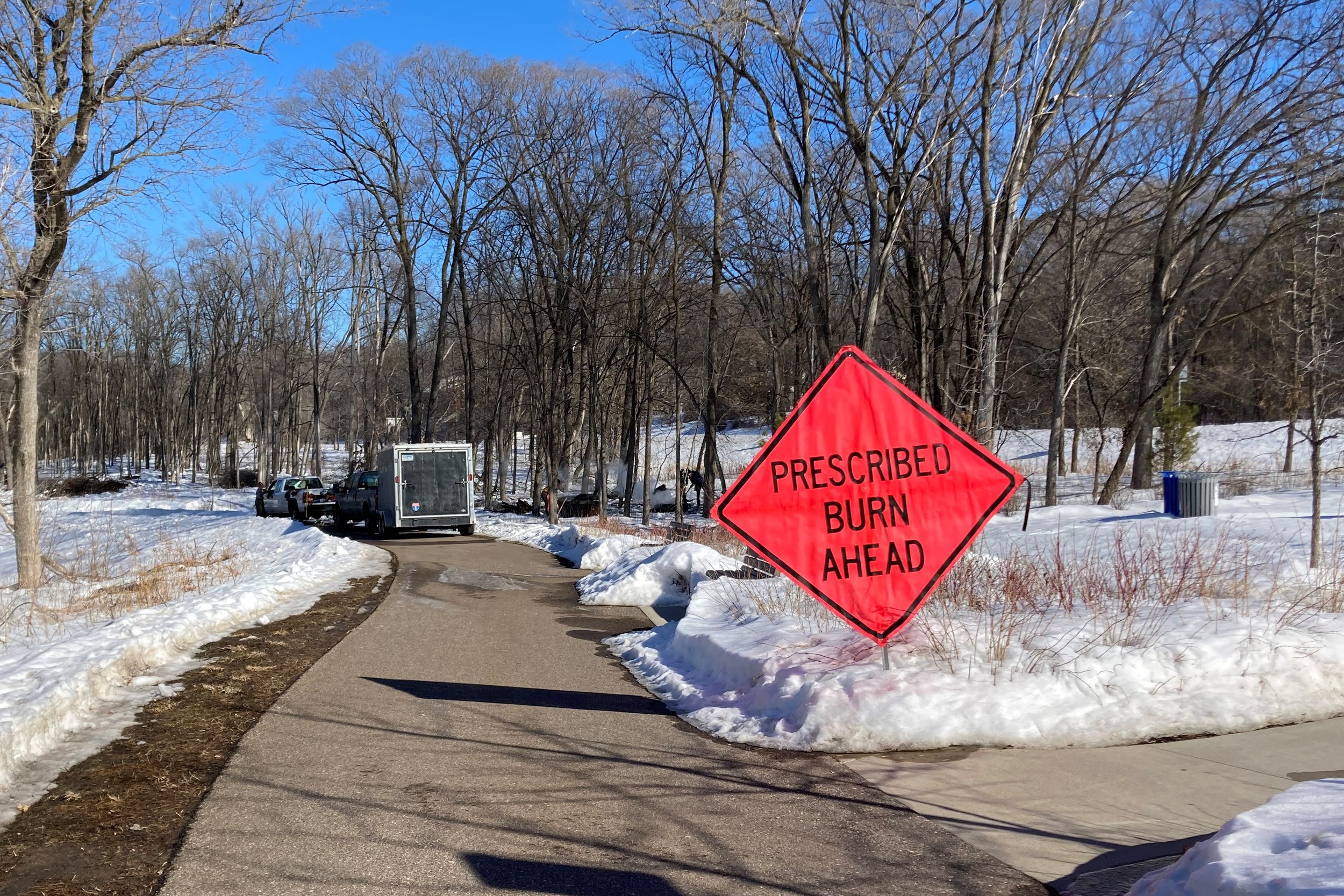
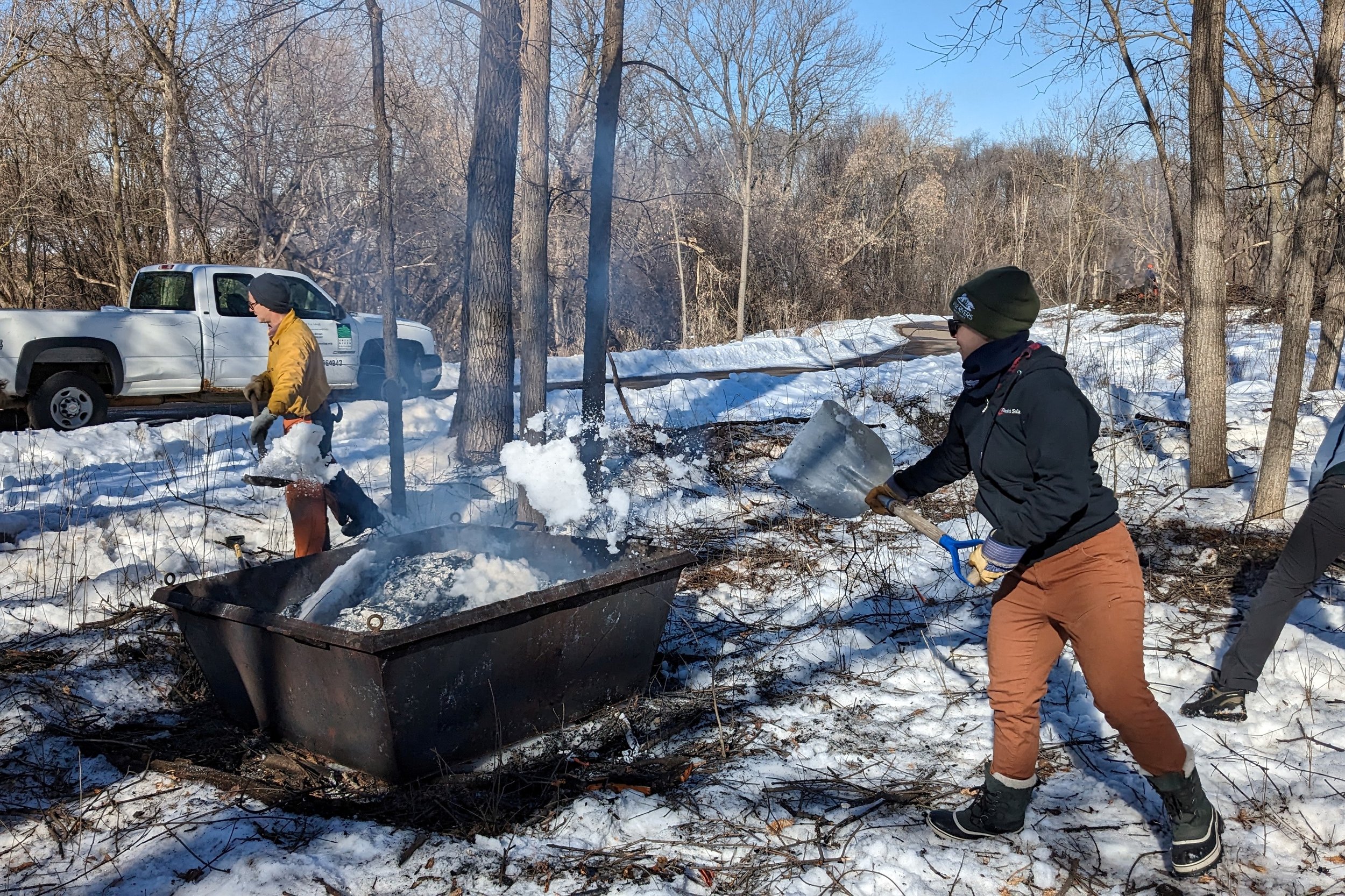
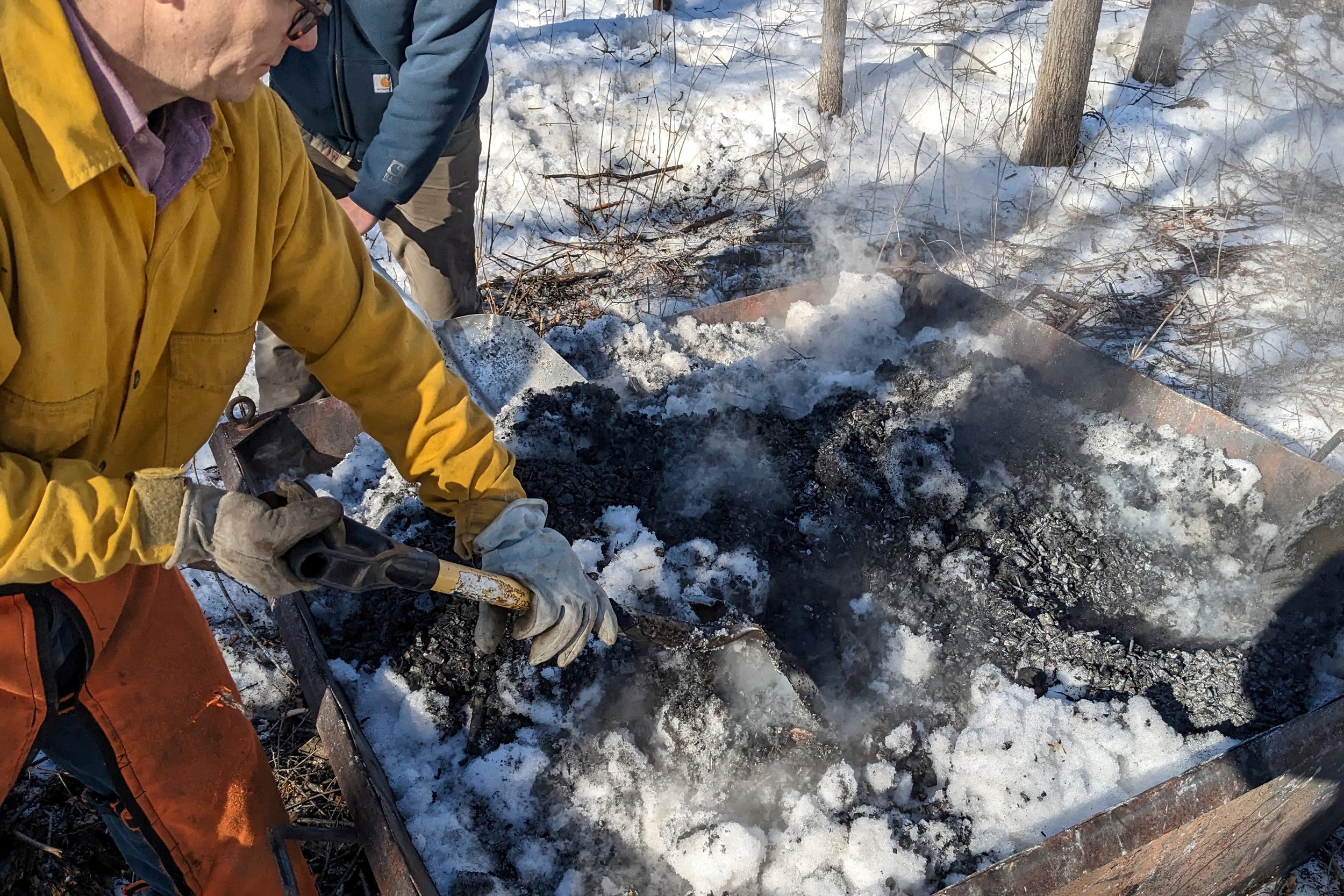
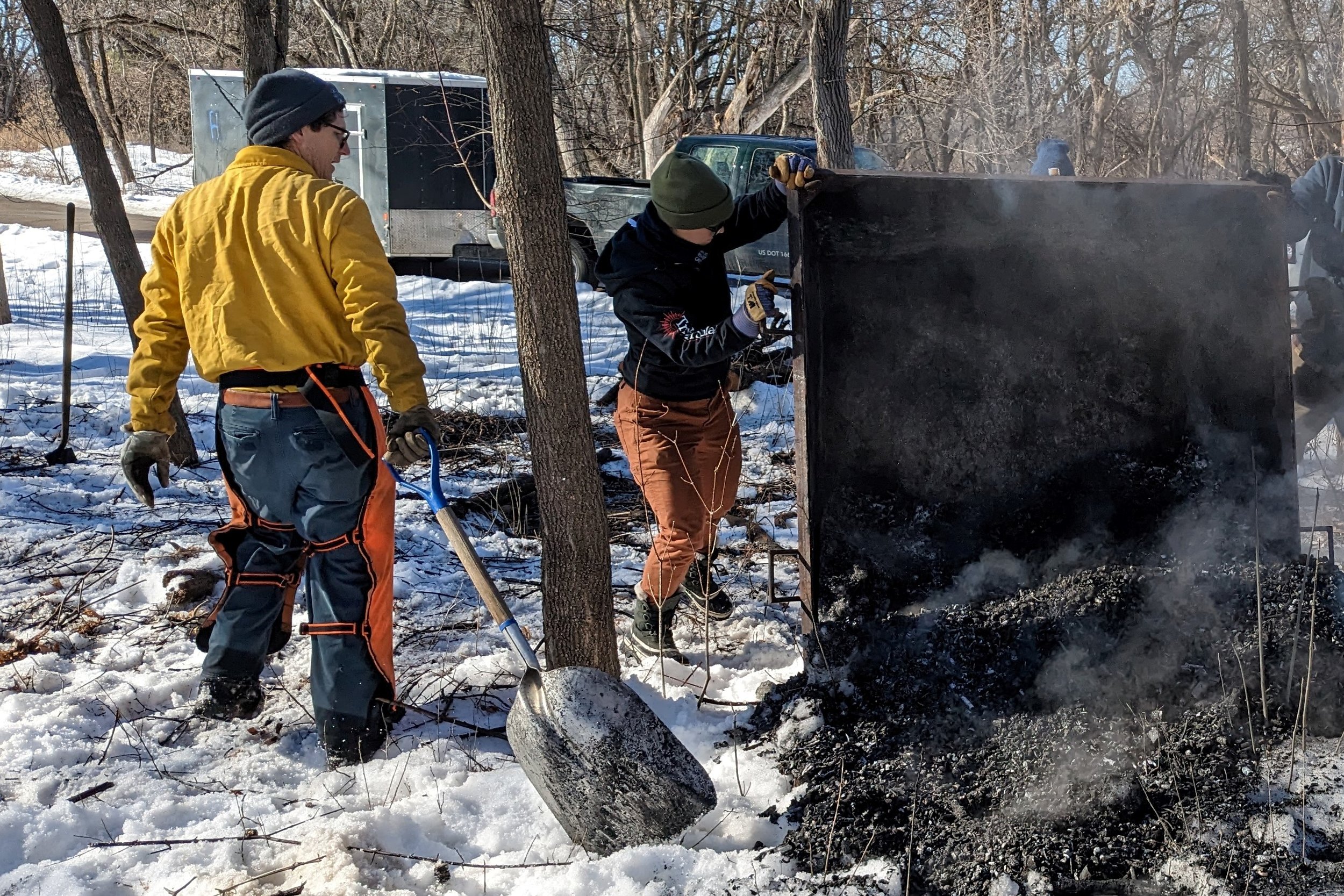
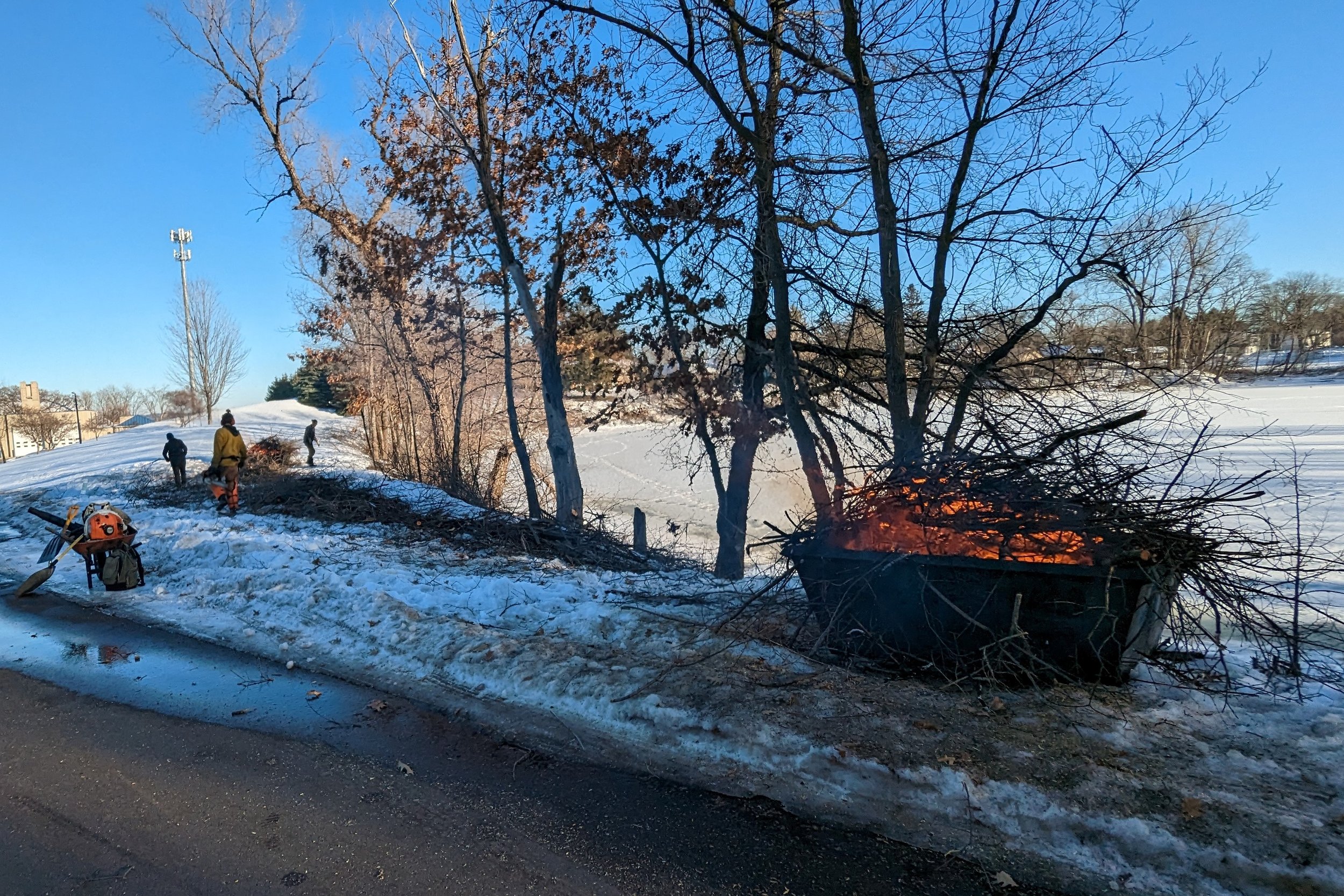
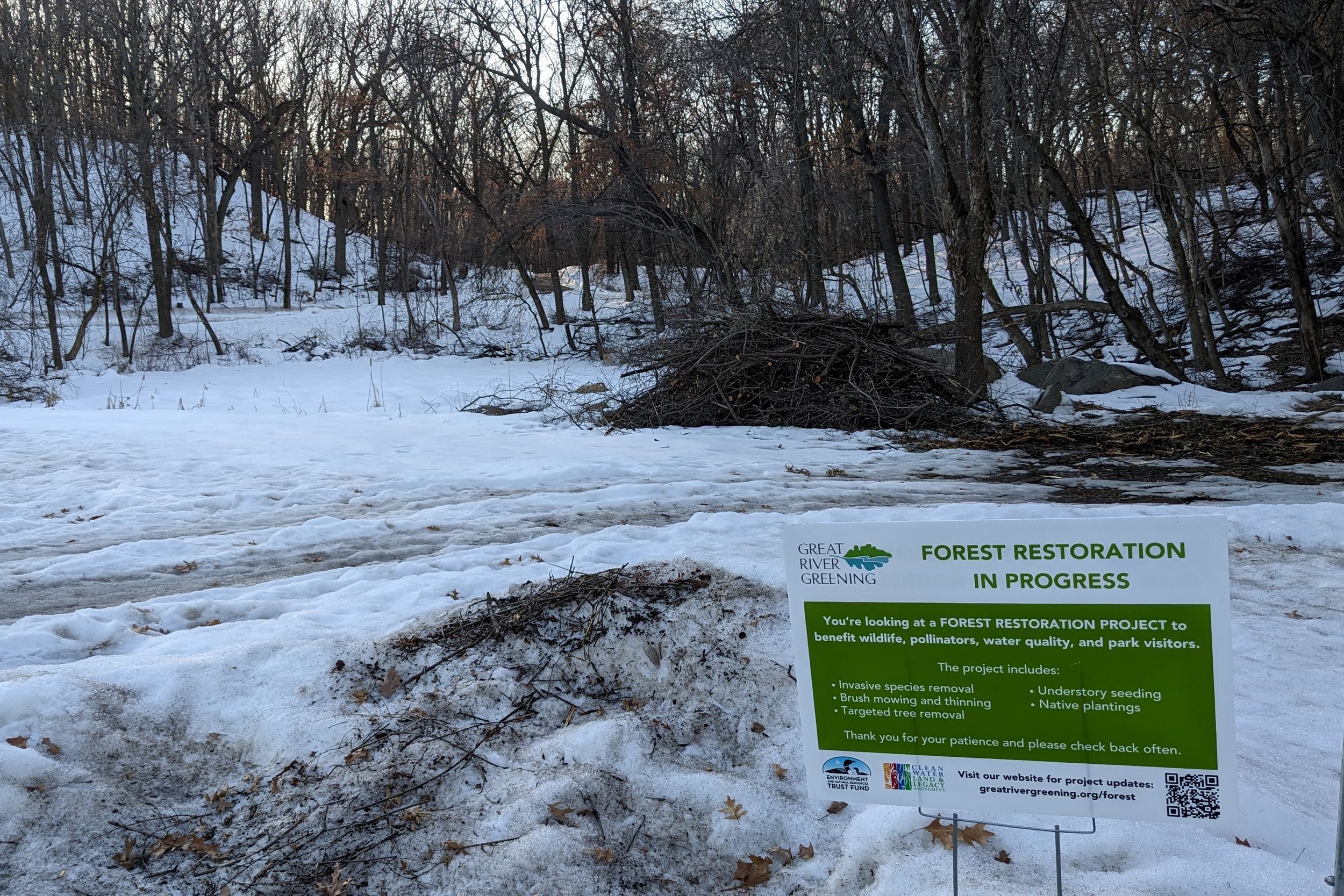
Thank you to our partners/funders:
Fort Snelling: Minnesota Department of Natural Resources, Dakota County Parks
Lake Byllesby Regional Park: Dakota County Parks, Outdoor Heritage Fund
Marthaler Park: City of West St. Paul, Dakota County Parks, Minnesota Environment and Natural Resource Trust Fund
New Kiln: National Association of Conservation Districts
Photo Descriptions/Credits (for images not in the gallery above):
Fire: Great River Greening restoration technician throws more buckthorn onto the biochar kiln fire at Fort Snelling (Becca Tucker).
Pollinator Prairie in Progress: Great River Greening field coordinator adds buckthorn onto the biochar kiln fire at Marthaler Park (Becca Tucker).
Our New Biochar Kiln: This kiln was purchased with funds from National Association of Conservation Districts, for outreach and demonstration activities in the Camp Ripley Sentinel Landscape (Maggie Allardice).
